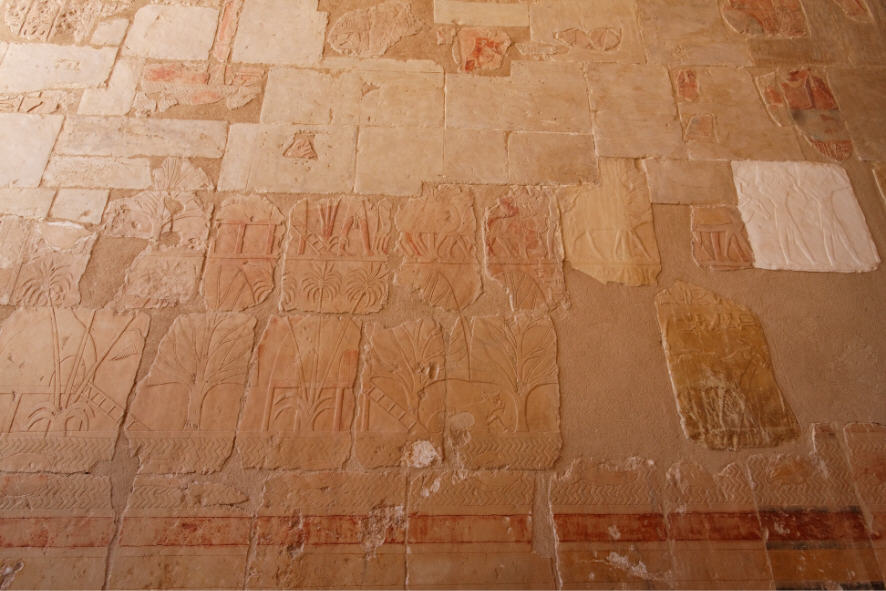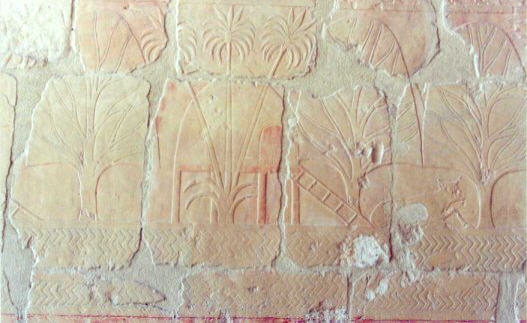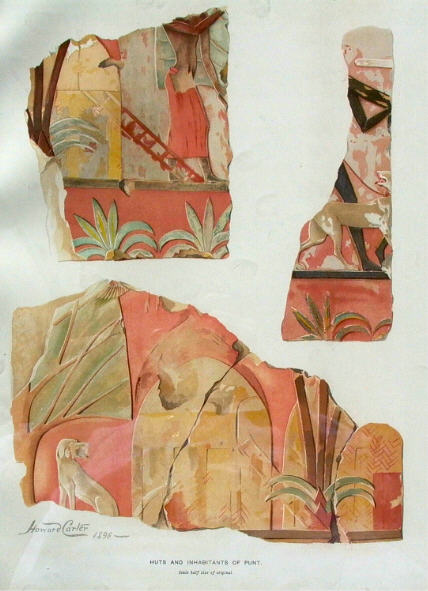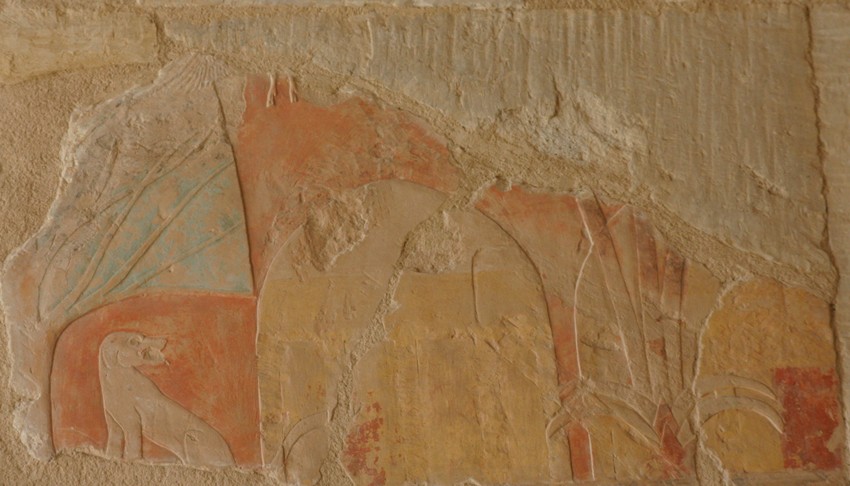|
Maat-ka-Ra Hatshepsut |
last update: 02.01.2010 | |
| Pillared Halls at the Tempel Djeser djeseru | ||
| Hall of Punt - Houses from Punt |
| Those unusual form of houses from Punt which were built on stakes was obviously so unusual and therefore of great interest for the members of the Egyptian expedition, that the report about the expedition in the Hall of Punt in the 2. Porticus shows at least 7 individual houses - however all of the same type of building. |

| Based on the relief, the houses were built as round huts, covered by a swung pointed roof and had been raised - which was probably of special interest for the Egyptians - on stakes or piles so highly over the ground that they could be achieved only by a ladder. |

| One of the houses from Punt (picture center), right from the ladder to the house one of the short horn cattle typical for Punt is resting in the shadow. This house was built directly at a river (represented by the blue wave lines) in which fishes and turtles (the latter directly under the cattle) were depicted. |

| Above, scenes from Punt, drawn by Howard Carter (published by; Naville, 1894-1908) |
| The last scene drawn by Carter is also shown on the next photo. |

| Such houses were observed in different regions at the east coast of Africa, among other areas e.g. in Sudan and in Ethiopia. |
| In a re-valuation of the well-known facts Phillips (Phillips, JEA 82, 1996) noticed a detail, which was ignored frequently during the description of the buildings. In H. Carters illustration of the relief (published by Naville, 1898) also the lower floors had been enclosed by twisted mats, which were fastened obviously to the stakes. Base on this spatial allocation, the upper floor was most likely used by the inhabitants to live at, whereas the lower floor served as a stockroom or an animal stable. |
| A separation in an "upper" and a lower floor might have several
advantages: - protection from wild animals - protection from frequent inundations - indirect "heating" of the upper floor at cold nights by animals kept in the basement In view of strong summer rainfalls at the horn of Africa, but also taking into account high temperature differences between day and night in some seasons, all three possibilities seem to be applicable as reason for this building method. |